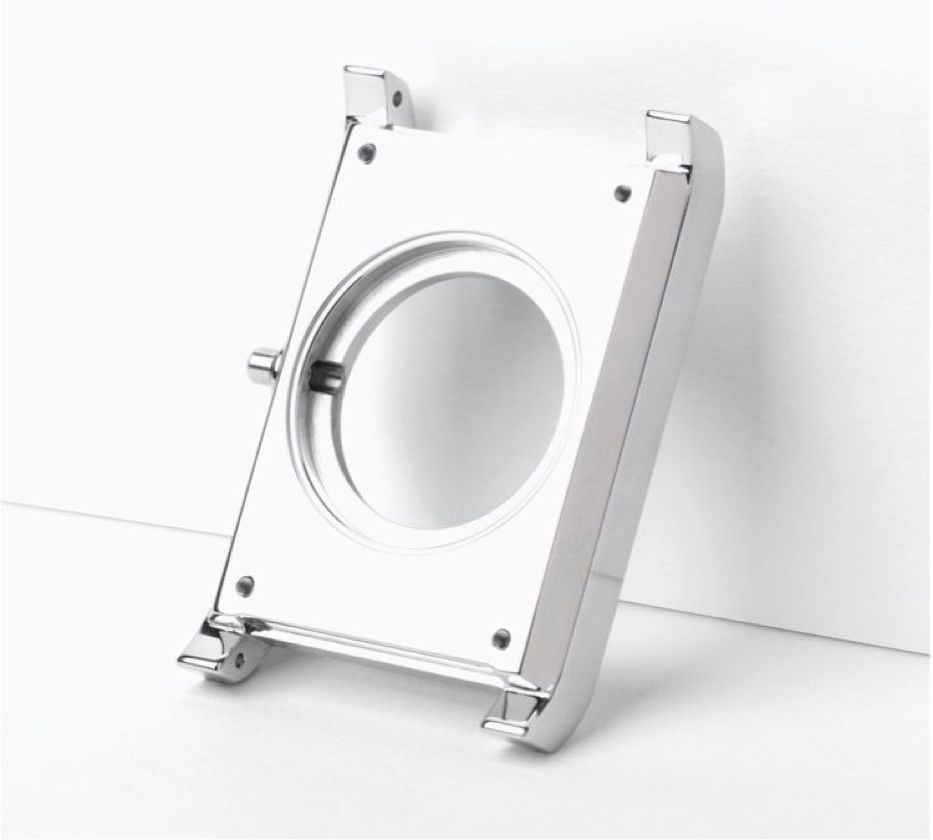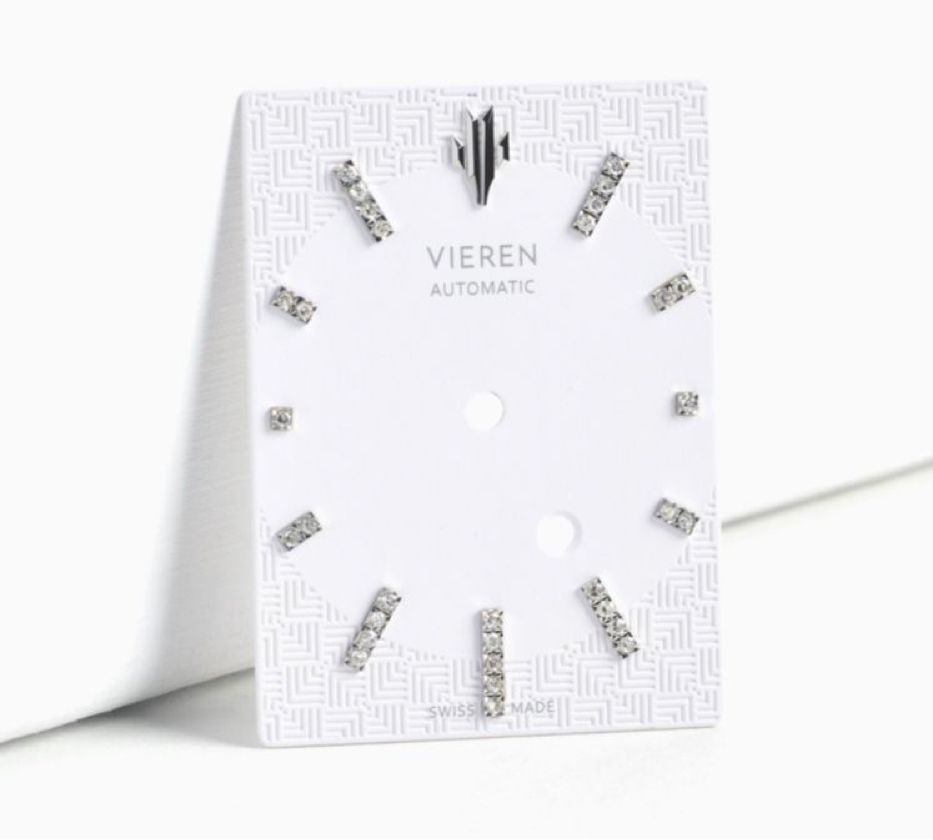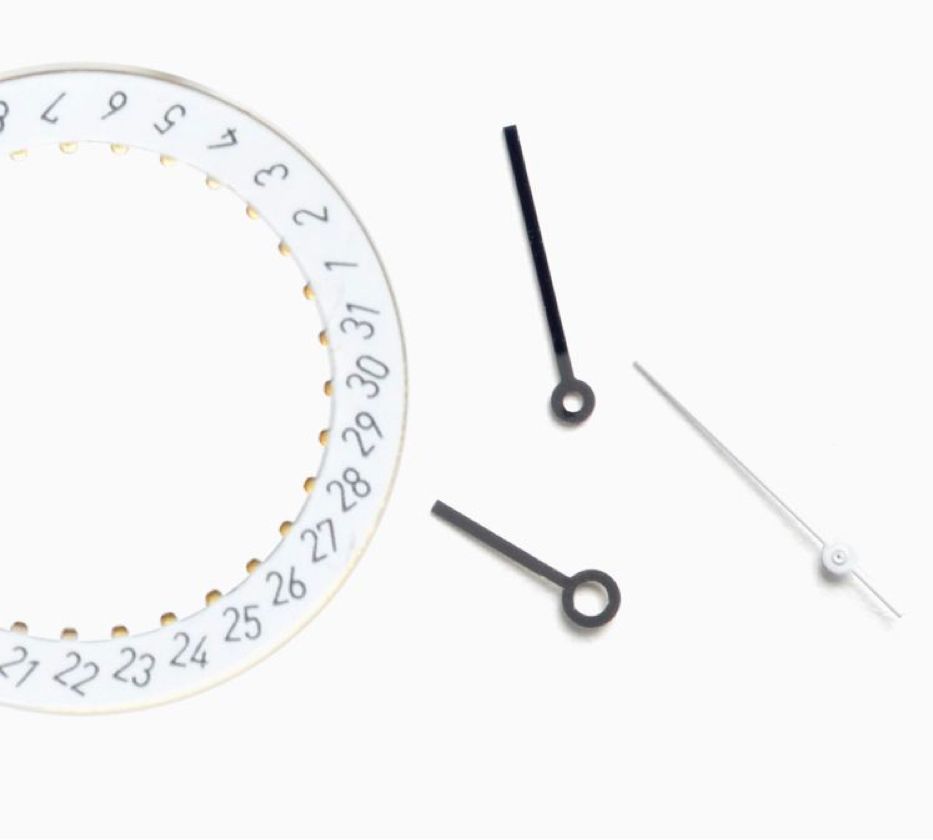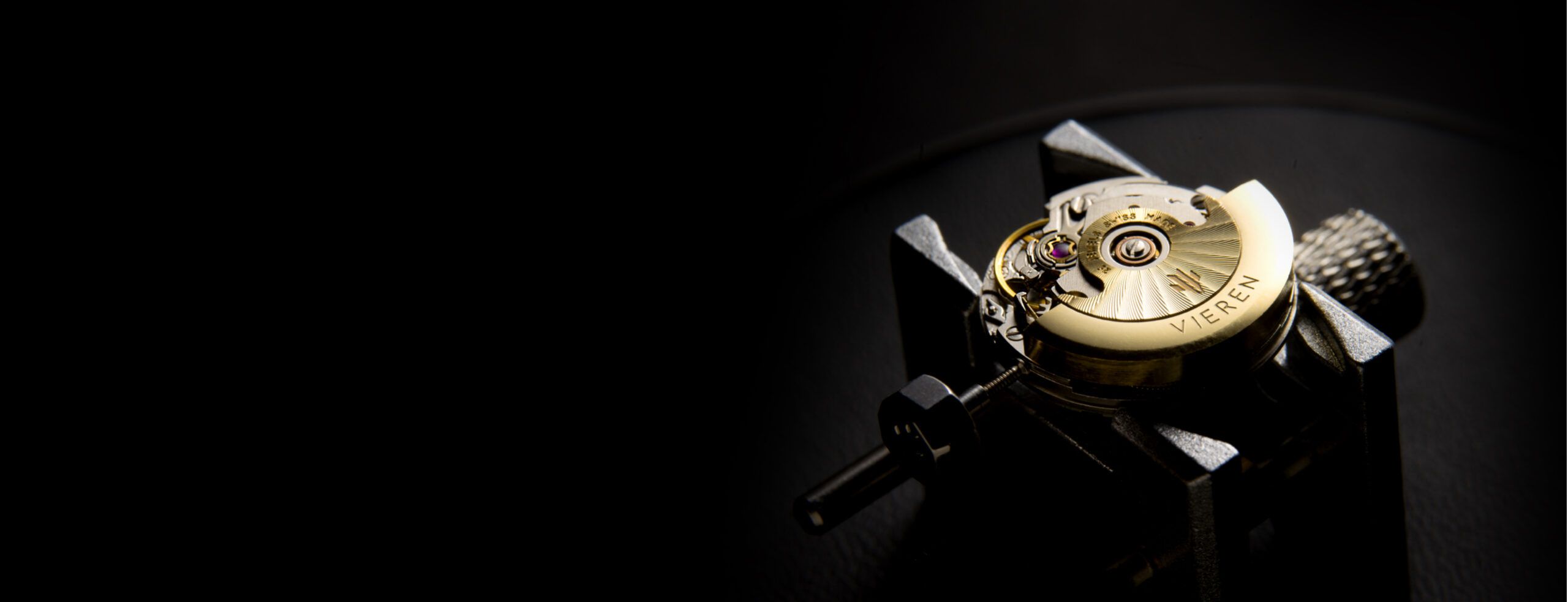STORIES
STORIES

What Is An Automatic Watch? Self-Winding Watches Explained
Looking for the meaning of automatic watches? Learn the names of different watch parts and the history of automatic watch movements in this guide.
February 2024
1. What Does Automatic Watch Mean?
1. What Does Automatic Watch Mean?
Automatic watches are powered with daily wear to tell time without a battery.
Automatic watches are powered with daily wear to tell time without a battery.
Watches are defined by the movement inside powering the watch. Similar to car engines, watch movements determine the functionality and quality of the timepiece. There are three types of watch movements: Mechanical, Automatic, and Quartz.
Automatic watches are among the most advanced of the three movement types. Also known as self-winding watches, automatic watches can keep accurate time with daily wear, rather than with manual winding (for mechanical watches) or with a battery (for quartz watches).
Automatic watches are among the most advanced of the three movement types. Also known as self-winding watches, automatic watches can keep accurate time with daily wear, rather than with manual winding (for mechanical watches) or with a battery (for quartz watches).
Watches are defined by the movement inside powering the watch. Similar to car engines, watch movements determine the functionality and quality of the timepiece. There are three types of watch movements: Mechanical, Automatic, and Quartz.
Automatic watches are among the most advanced of the three movement types. Also known as self-winding watches, automatic watches can keep accurate time with daily wear, rather than with manual winding (for mechanical watches) or with a battery (for quartz watches).
Automatic watches are among the most advanced of the three movement types. Also known as self-winding watches, automatic watches can keep accurate time with daily wear, rather than with manual winding (for mechanical watches) or with a battery (for quartz watches).


2. What Are Automatic Watch Movements?
2. What Are Automatic Watch Movements?
Automatic watch movements feature an additional rotor that harnesses the energy from the motion of the wearer's wrist to power the watch.
When worn every day, an automatic watch can tell time without the need for manual winding. Quality automatic watch movements are highly reliable and can be serviced over time to last decades. (Learn How Automatic Watches Work)
When worn every day, an automatic watch can tell time without the need for manual winding. Quality automatic watch movements are highly reliable and can be serviced over time to last decades. (Learn How Automatic Watches Work)
Automatic watch movements feature an additional rotor that harnesses the energy from the motion of the wearer's wrist to power the watch.
When worn every day, an automatic watch can tell time without the need for manual winding. Quality automatic watch movements are highly reliable and can be serviced over time to last decades. (Learn How Automatic Watches Work)
When worn every day, an automatic watch can tell time without the need for manual winding. Quality automatic watch movements are highly reliable and can be serviced over time to last decades. (Learn How Automatic Watches Work)


3. Automatic Watch Parts Diagram - Explained
3. Automatic Watch Parts Diagram - Explained
Get to know the different parts of an automatic watch and how they function.
Get to know the different parts of an automatic watch and how they function.



MOVEMENT
Also known as a calibre, it’s the mechanism that powers the watch

MOVEMENT
Also known as a calibre, it’s the mechanism that powers the watch

CASE
Exterior metal shell that protects the movement and dial parts

CASE
Exterior metal shell that protects the movement and dial parts

DIAL
Decorative metal plate that displays key timekeeping metrics

DIAL
Decorative metal plate that displays key timekeeping metrics

SAPPHIRE CRYSTAL
Extremely scratch-resistant clear glass used in high quality watches

SAPPHIRE CRYSTAL
Extremely scratch-resistant clear glass used in high quality watches

CROWN
Outside gear that adjusts the time and winds the watch movement

CROWN
Outside gear that adjusts the time and winds the watch movement

HANDS AND DATE DISC
Tracking markers that display units of time and date on the dial

HANDS AND DATE DISC
Tracking markers that display units of time and date on the dial

BRACELET OR STRAP
Metal band or leather strap that secures the watch onto the wrist

BRACELET OR STRAP
Metal band or leather strap that secures the watch onto the wrist

BUCKLE
Clasp that fastens and releases to adjust the watch on the wrist

BUCKLE
Clasp that fastens and releases to adjust the watch on the wrist
4. History of Automatic Watch Movements
4. History of Automatic Watch Movements


1770s: THE BEGINNING
The pursuit for accurate timekeeping has been a global race for centuries. The first automatic watch movement was created in 1776 for the pocket watch by Swiss watchmaker Abraham Louis Perrelet in Le Locle, Switzerland.
1910s: RISING IN POPULARITY
But it was only after World War I when automatic wristwatches became a coveted household item. During the war, people started to realize the benefits of having a timekeeping device strapped onto the wrist (instead of in their pocket).
Wristwatches became widely popular among men going into the military in the 1910s. Almost almost every man had a mechanical wristwatch strapped to their arm when they returned home from the war.
Wristwatches became widely popular among men going into the military in the 1910s. Almost almost every man had a mechanical wristwatch strapped to their arm when they returned home from the war.
1920s: THE FIRST WRISTWATCH
Later in 1923, the first automatic wristwatch was created by John Harwood from Britain.
Known as the bumper watch, this initial design featured a primitive weighted rotor that would swing 180 degrees to power the watch, often "bumping" into the sides of the watch. But this early version was quite heavy and would only power the watch accurately for up to 12 hours.
Known as the bumper watch, this initial design featured a primitive weighted rotor that would swing 180 degrees to power the watch, often "bumping" into the sides of the watch. But this early version was quite heavy and would only power the watch accurately for up to 12 hours.
2020s: TODAY’S TIMEPIECES
Modern automatic watches now feature a rotor that swings a full 360 degrees, allowing it to run autonomously for more than 24 hours. This improved design was first introduced in 1930 by the Rolex Oyster Perpetual, an innovative style that pushed the Swiss watchmaking industry forward.
Today, the highest quality automatic watch movements come from Watch Valley in Switzerland, a 200km region in the Jura Mountains that is home to many of the world's best luxury watch manufacturers in the world.
Today, the highest quality automatic watch movements come from Watch Valley in Switzerland, a 200km region in the Jura Mountains that is home to many of the world's best luxury watch manufacturers in the world.
1770s: THE BEGINNING
The pursuit for accurate timekeeping has been a global race for centuries. The first automatic watch movement was created in 1776 for the pocket watch by Swiss watchmaker Abraham Louis Perrelet in Le Locle, Switzerland.
1910s: RISING IN POPULARITY
But it was only after World War I when automatic wristwatches became a coveted household item. During the war, people started to realize the benefits of having a timekeeping device strapped onto the wrist (instead of in their pocket).
Wristwatches became widely popular among men going into the military in the 1910s. Almost almost every man had a mechanical wristwatch strapped to their arm when they returned home from the war.
Wristwatches became widely popular among men going into the military in the 1910s. Almost almost every man had a mechanical wristwatch strapped to their arm when they returned home from the war.
1920s: THE FIRST WRISTWATCH
Later in 1923, the first automatic wristwatch was created by John Harwood from Britain.
Known as the bumper watch, this initial design featured a primitive weighted rotor that would swing 180 degrees to power the watch, often "bumping" into the sides of the watch. But this early version was quite heavy and would only power the watch accurately for up to 12 hours.
Known as the bumper watch, this initial design featured a primitive weighted rotor that would swing 180 degrees to power the watch, often "bumping" into the sides of the watch. But this early version was quite heavy and would only power the watch accurately for up to 12 hours.
2020s: TODAY’S TIMEPIECES
Modern automatic watches now feature a rotor that swings a full 360 degrees, allowing it to run autonomously for more than 24 hours. This improved design was first introduced in 1930 by the Rolex Oyster Perpetual, an innovative style that pushed the Swiss watchmaking industry forward.
Today, the highest quality automatic watch movements come from Watch Valley in Switzerland, a 200km region in the Jura Mountains that is home to many of the world's best luxury watch manufacturers in the world.
Today, the highest quality automatic watch movements come from Watch Valley in Switzerland, a 200km region in the Jura Mountains that is home to many of the world's best luxury watch manufacturers in the world.


5. Best Automatic Watch Movements
5. Best Automatic Watch Movements
Swiss automatic movements, are globally revered as the gold standard for quality.
Swiss automatic movements, are globally revered as the gold standard for quality.
Swiss Made is a coveted legal designation given to the world's most well-crafted and reliable timepieces. Look for the Certified Swiss Made label on the dial or caseback to identify authentic timepieces.
Brands like ETA are the top of the line, followed by Sellita and Ronda movements. Beyond functionality, look for the number of jewels, the power reserve duration, and the water resistance depth to assess the overall quality of the movement.
Brands like ETA are the top of the line, followed by Sellita and Ronda movements. Beyond functionality, look for the number of jewels, the power reserve duration, and the water resistance depth to assess the overall quality of the movement.
Swiss Made is a coveted legal designation given to the world's most well-crafted and reliable timepieces. Look for the Certified Swiss Made label on the dial or caseback to identify authentic timepieces.
Brands like ETA are the top of the line, followed by Sellita and Ronda movements. Beyond functionality, look for the number of jewels, the power reserve duration, and the water resistance depth to assess the overall quality of the movement.
Brands like ETA are the top of the line, followed by Sellita and Ronda movements. Beyond functionality, look for the number of jewels, the power reserve duration, and the water resistance depth to assess the overall quality of the movement.


SUMMARY
Automatic watches are the original Fitbit. First introduced in the 1770s, automatic watch movements are powered by your momentum when worn every day. These movements are renowned for their reliability, accuracy, and intricate craftsmanship. By understanding the different parts of an automatic watch, you can start to appreciate how these complicated mechanisms tell time accurately for decades without a battery.
SUMMARY
Automatic watches are the original Fitbit. First introduced in the 1770s, automatic watch movements are powered by your momentum when worn every day. These movements are renowned for their reliability, accuracy, and intricate craftsmanship. By understanding the different parts of an automatic watch, you can start to appreciate how these complicated mechanisms tell time accurately for decades without a battery.

ABOUT THE AUTHOR
Jess Chow, Founder and CEO VIEREN
As a next-generation watch entrepreneur, Jess’ passion for horology led her to create VIEREN - the coveted new microbrand handcrafting modernist Swiss Made automatic watches to power your time.

ABOUT THE AUTHOR
Jess Chow, Founder and CEO VIEREN
As a next-generation watch entrepreneur, Jess’ passion for horology led her to create VIEREN - the coveted new microbrand handcrafting modernist Swiss Made automatic watches to power your time.

UNLOCK: THE AUTOMATIC WATCHES GUIDE
Gain exclusive access to our in-depth guide on automatic watches and take your knowledge to the next level.
.
SUGGESTED FOR YOU
SUGGESTED FOR YOU



